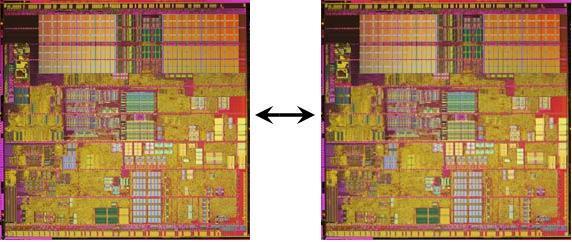| AMD X2 |

|
|
Dual Core?
With Intel's recent release of its dual core processor the race is on for share of this new market. Let's first take a good look at just what dual core is and what it brings to the computing experience. Dual core is by definition a CPU that will fit in a single socket that contains two CPU dies within. AMD and Intel have taken two different approaches to bringing dual core processors to its consumers. Intel's approach was to take two of its sucessful P4 processors and marry them together by creating the bus and pipelines to allow communication. AMD's approach began at the birth of the AMD 64. AMD designed its 64 bit processor from inception with dual cores in mind. While both companies were waiting for the 90nm process to allow manufacturing of these chips feasible the prices are still high as you will later see. I can see you asking now "How is this any different from a dual processor setup?" The answer is simply "a great deal different".

Dual Core vs. Dual Processor
Dual processor setups were the only way to go for many years if you were in need of serious computing power. Architechs, engineers, graphic artists, and even gamers desiring the ultimate in power could utilize a dual processor setup. In such a setup each core is able to perform computational tasks so long as the application supports two processors. These processors communicate with eachother through a bus on the motherboard in their sharing of loads. Intel and AMD have both realized the performance limiter in any dual processor setup was the communication lag between the processors. Each company has sought to eliminate that lag by encorporating another processor on the same die, thus eliminating 99% of the lag time in communication. The difference between AMD and Intel is that Intel stopped there and AMD thought ahead. Why eliminate the communication gap between the processors when there also exists a significant lag in commincation between the processor and the memory controller. With the launch of the AMD 64, AMD incorporated the north bridge into the chip thus greatly improving memory bandwidth and lowering memory latency. The move to dual core brings all of the benefits of a dual processor setup and also the elimination of considerable bottlenecks and latency. While Intel's dual core processor will come in two varieties the Pentium Extreme Edition and the Pentium D, AMD's dual core will arrive under the name AMD 64 Athlon X2 and will continue their performance rating system.
Let's take a look at the Athlon X2.
| « Back Home | Specifications » |



